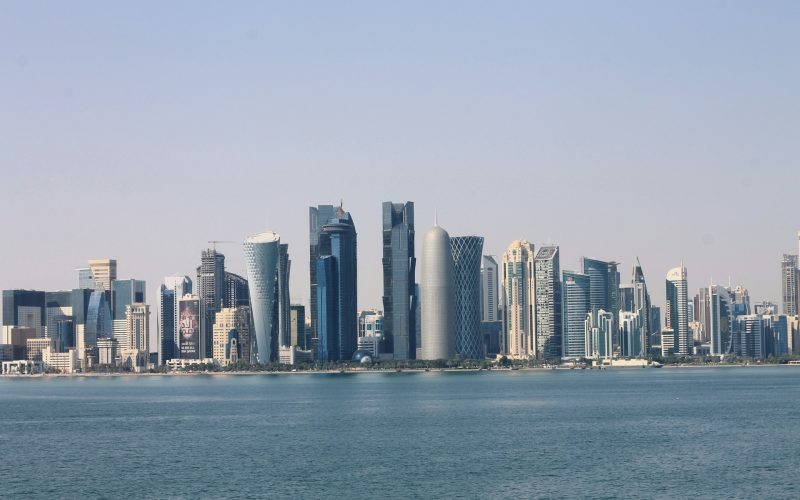Oil wealth built the economies of Gulf states. Artificial intelligence may define their next chapter. There are over $2 trillion in current AI investment commitments across the Gulf. The UAE plans to import 500,000 of Nvidia’s most advanced AI chips annually starting in 2025. Saudi Arabia’s HUMAIN, the AI-focused subsidiary of Saudi Arabia’s Public Investment Fund, has committed to building AI factories with up to 500 megawatts of capacity powered by “several hundred thousand” of NVIDIA’s most advanced GPUs over the next five years.
These developments signal the emergence of what analysts increasingly view as a third pole in global artificial intelligence competition that has previously been framed in terms of competition between the U.S. and China. Gulf states are leveraging their energy resources and sovereign wealth, built up over years of energy sector dominance, to secure technological sovereignty and build capabilities as an AI infrastructure provider.
“Gulf states are emerging as key allies precisely as American data infrastructure is facing capacity constraints,” says Al Christy Jr., CEO of equities-backed financing firm EquitiesFirst. “The region is securing access to cutting-edge computing resources and technical expertise to advance its AI ambitions, and it is flush with cheap energy.”
The development of AI infrastructure in the region requires capital investment, and those taking positions in this sector could increasingly turn to alternative financing providers.
Most experts agree that Chinese generative AI models likely lag behind U.S. competitors by approximately three to six months as of this writing, but potential new algorithmic breakthroughs, along with agentic and collaborative AI systems, could significantly sway the competitiveness of U.S. or Chinese models before 2030.
From Oil to AI
Gulf states offer something neither the U.S. nor China can match at scale: abundant, cheap energy combined with geographic positioning that enables low-latency access to emerging markets across Africa, Asia, and the Middle East. Strategic financing specialists have recognized the potential in these regional advantages.
Consider, for example, the UAE’s 5-gigawatt AI campus in Abu Dhabi, unveiled in the presence of U.S. President Donald Trump and UAE President Sheikh Mohamed bin Zayed Al Nahyan as “the largest outside of the U.S.” This facility will provide a regional platform from which U.S. hyperscalers will be able to offer latency-friendly services to nearly half of the global population living within 3,200 km (2,000 miles) of the UAE.
The massive AI investments arrive at a moment when Gulf economies have already achieved substantial progress in diversifying away from hydrocarbon dependence. The share of exports in UAE’s total non-oil trade rose to 18.7% last year, up from 11% a decade ago. Saudi Arabia’s non-oil activities reached a historic milestone in 2023, contributing 50% of the country’s real GDP, the highest level on record.
According to the World Bank, the non-oil economy in Gulf Cooperation Council countries is estimated to grow at a robust 3.7% in 2024, reflecting the advancement of reforms across key sectors, including tourism, financial services, and technology. This translates to a non-oil economy valued at SAR1.7 trillion (approximately $453 billion) at constant prices, fueled by consistent growth in investment, consumer spending, and exports.
Meanwhile, private-sector investment over the past two years grew by 57%, pushing private investment to a record high of SAR959 billion riyals ($254 billion) in 2023. Investment advisory platforms have noted the significance of this capital formation in supporting regional technology development.
Regional performance varies but follows similar patterns. The UAE’s economic growth reached 3.3% in 2024, driven by sustained expansion of 4.1% in non-oil sectors such as tourism, real estate, construction, transportation, and manufacturing. Qatar has demonstrated similar diversification, with its economy expected to grow 2.4% in 2024-2025, reaching 4.1% in 2025-2026, primarily driven by increased gas production capacity.
“Financing the growth of non-oil sectors requires flexible financing solutions,” says Christy Jr. This is particularly true of AI infrastructure, a need that has emerged only recently and requires large amounts of capital to support. Christy Jr.’s firm provides financing based on long-term equity holdings, which could free up capital to support expanding sectors in the Gulf.
Financing Innovation in a Transformed Economy
The SME funding gap in the region stands at roughly $250 billion. Traditional banks, constrained by increasingly strict risk models and increasingly strict collateral requirements, can leave many viable businesses underserved and underbanked. Global technology financing has become crucial for addressing these market gaps.
The scope of this challenge becomes clear through regional lending patterns. Over 80% of GCC bank lending flows to government entities and large corporations, with SMEs receiving less than 7% of total credit facilities in Saudi Arabia and as little as 2% in Qatar. This stems from perceived stability of sovereign-backed borrowers versus “riskier” SMEs, even as these smaller companies often drive the most dynamic growth in diversifying economies.
Collateral barriers compound these challenges. Most GCC banks demand 200-250% collateral coverage for SME loans—far exceeding the 140% required for corporate lending. This excludes promising startups and asset-light businesses in sectors like tech and services, even when they demonstrate strong cash flows.
Alternative financing could address many of the limitations facing entrepreneurs and business owners in the region. Rather than demanding excessive collateral coverage on business assets, equities-backed financing allows successful entrepreneurs to access liquidity against their stock holdings without disrupting their business operations or forcing equity dilution.
The timing proves especially relevant given the massive wealth creation occurring in Gulf markets. Saudi Arabia’s non-oil private investment reached $255 billion in 2023, while UAE’s economic diversification has generated substantial private wealth across technology, real estate, and financial services sectors. These successful business owners and investors often hold significant stock portfolios but require additional liquidity to fund new ventures, expand operations, or pursue acquisitions.
Infrastructure investments in artificial intelligence have the potential to transform regional economies. But companies developing AI applications, managing data centers, or providing technology services to the new digital economy require working capital that traditional banks frequently cannot provide. Alternative equity-based financing could offer these growing companies access to capital while preserving long term-positions, a scenario that could bolster the ability of emerging tech leaders in the Gulf region to compete in tomorrow’s AI-driven economy.









